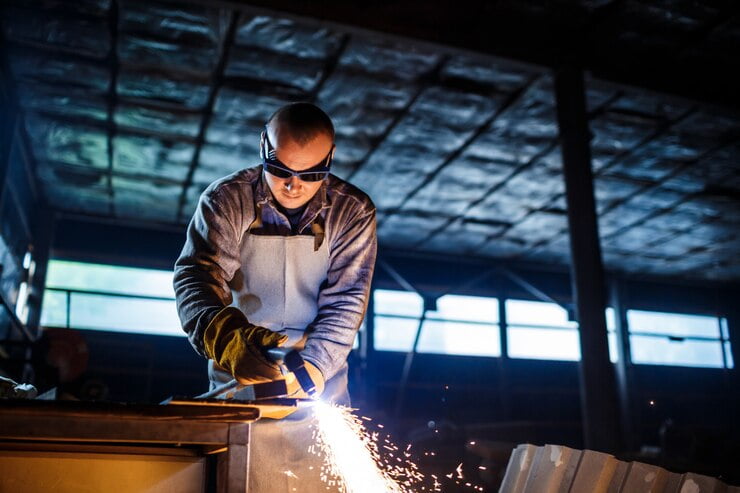In the intricate world of manufacturing, metalworking standards serve as the guiding light, ensuring consistency, quality, and safety across the industry. As a manufacturer, understanding and adhering to these standards is not just a matter of compliance but a strategic move toward building trust and delivering excellence.
In this comprehensive guide, we’ll delve into the complexities of metalworking standards and equip you with the knowledge to navigate through them effectively.
Understanding Metalworking Standards
Metalworking standards are the backbone of the manufacturing industry. They provide a common language, set clear expectations, and establish benchmarks for quality and performance. These standards cover a wide range of aspects, from material specifications and testing methods to product dimensions and tolerances. By adhering to these standards, manufacturers can:
- Ensure consistency and reliability in their products
- Enhance safety for both workers and end-users
- Facilitate seamless communication and collaboration with stakeholders
- Gain a competitive edge by demonstrating a commitment to quality
Overview of Major Metalworking Standards: ASTM, ISO, and ANSI
When it comes to metalworking standards, three major organizations stand out:
- ASTM International: Formerly known as the American Society for Testing and Materials, ASTM develops and publishes voluntary consensus standards for a wide range of materials, products, systems, and services. Their standards cover various aspects of metalworking, including material specifications, testing methods, and product performance.
- International Organization for Standardization (ISO): ISO is an independent, non-governmental international organization that brings together experts to develop voluntary, consensus-based, market-relevant standards. ISO standards cover a vast array of industries, including metalworking, and focus on quality management, environmental management, and safety.
- American National Standards Institute (ANSI): ANSI is a private, non-profit organization that oversees the development of voluntary consensus standards for products, services, processes, systems, and personnel in the United States. ANSI standards often incorporate or reference ASTM and ISO standards, providing a comprehensive framework for manufacturers.
How Metalworking Standards Impact Manufacturing Quality and Safety
Metalworking standards play a crucial role in ensuring the quality and safety of manufactured products. By following these standards, manufacturers can:
- Ensure Material Quality: Standards specify the chemical composition, mechanical properties, and performance characteristics of various metals and alloys. For instance, when laser cutting services are needed for a particular metal, the standards for that metal will dictate its composition and properties, ensuring consistency and quality in the final product.
- Facilitate Precision and Accuracy: Standards provide guidelines for measuring dimensions, tolerances, and other critical aspects of products. By adhering to these standards, manufacturers can ensure precision and accuracy in their manufacturing processes, resulting in high-quality end products.
- Promote Safety: Standards also cover safety aspects, such as the use of personal protective equipment (PPE), safe handling and storage of materials, and proper disposal of waste. By following these protocols, manufacturers can create a safer work environment for their employees and minimize potential hazards for end-users.
Navigating the Selection Process: Key Factors to Consider
With numerous metalworking standards available, selecting the most appropriate ones can be a daunting task. Here are some key factors to consider when navigating the selection process:
- Industry-Specific Requirements: Different industries may have specific standards that are more relevant to their needs. For example, the aerospace industry has stringent requirements for material properties and testing methods. Manufacturers should identify the standards that are most applicable to their target industries.
- Customer Expectations: Customers may have specific requirements or preferences for metalworking standards. Manufacturers should engage with their customers to understand their expectations and ensure that their products meet the necessary standards.
- Regulatory Compliance: Depending on the industry and the intended use of the products, there may be regulatory requirements that mandate adherence to specific standards. Manufacturers should be aware of these requirements and ensure compliance.
- Internal Capabilities: Implementing and adhering to metalworking standards requires specific knowledge, skills, and equipment. Manufacturers should assess their internal capabilities and resources to determine which standards they can realistically implement.
Future Trends in Metalworking Standards: Sustainability and Innovation
As the manufacturing industry evolves, so do metalworking standards. Two key trends shaping the future of these standards are sustainability and innovation.
- Sustainability: There is a growing emphasis on sustainable manufacturing practices, and metalworking standards are adapting to incorporate environmental considerations. Standards are being developed to address issues such as energy efficiency, waste reduction, and the use of eco-friendly materials.
- Innovation: Advances in technology are driving innovation in metalworking processes and materials. Standards are evolving to accommodate these innovations, such as additive manufacturing, advanced alloys, and smart manufacturing systems.
Manufacturers should stay informed about these trends and consider how they can incorporate them into their operations to stay ahead of the curve.
Conclusion
Metalworking standards play a vital role in shaping the manufacturing industry. They ensure consistency, quality, and safety, while also facilitating innovation and sustainability. As a manufacturer, understanding and adhering to these standards is not just a matter of compliance but a strategic move toward building trust, delivering excellence, and staying competitive in an ever-evolving industry.

